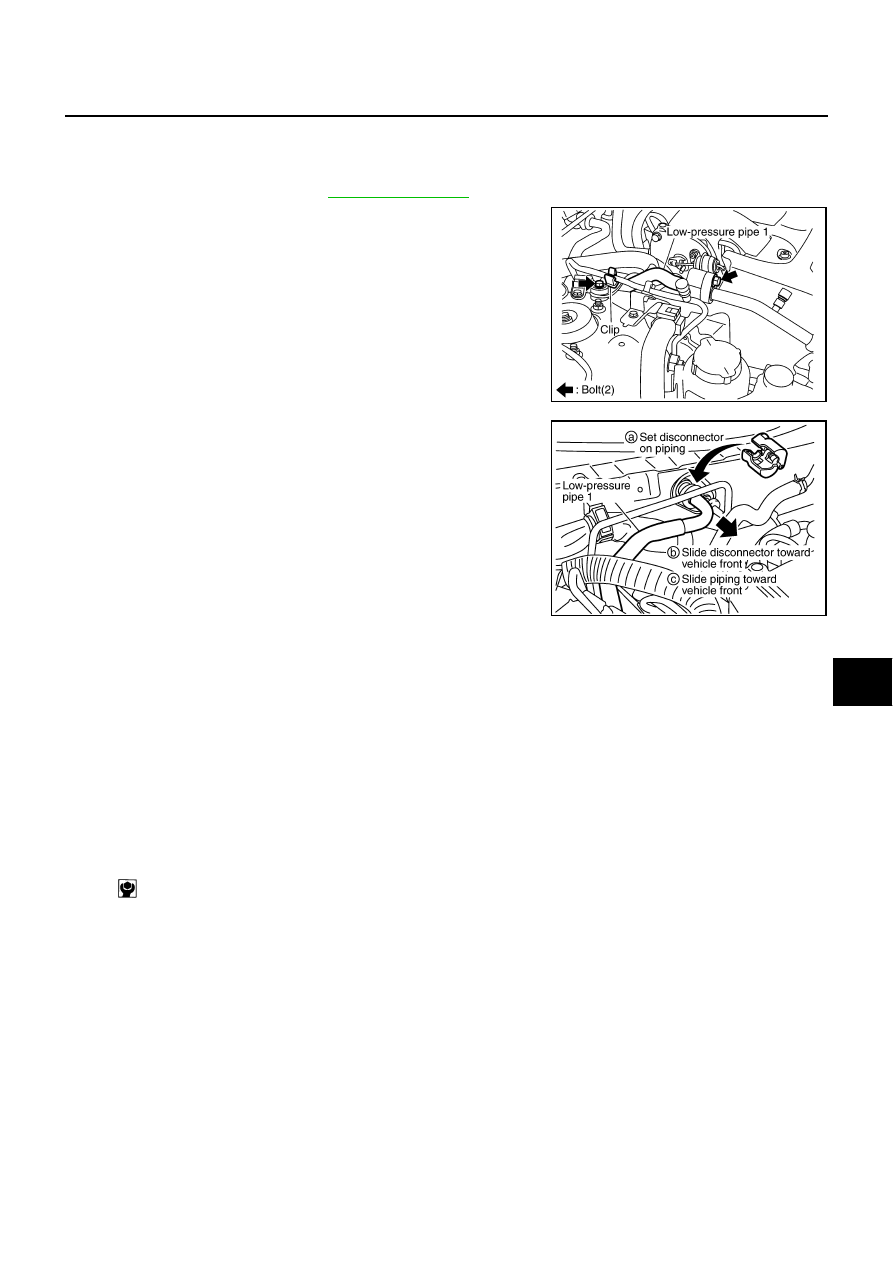Nissan Murano Z50 (2006 year). Manual - part 11

REFRIGERANT LINES
ATC-137
C
D
E
F
G
H
I
K
L
M
A
B
ATC
Revision: 2006 August
2006 Murano
Removal and Installation of Low-pressure Pipe 1 (Engine Compartment)
NJS000C3
REMOVAL
1.
Use a refrigerant collecting equipment (for HFC-134a) to discharge the refrigerant.
2.
Remove cowl top cover. Refer to
3.
Remove mounting bolts from low-pressure pipe 1 and low-pres-
sure pipe 1 bracket.
4.
Remove high-pressure pipe 1 from clip.
CAUTION:
Cap or wrap the joint of low-pressure pipe 1 and low-pres-
sure flexible hose with suitable material such as vinyl tape
to avoid the entry of air.
5.
Disconnect one-touch joints.
a.
Set a disconnector (SST: 9253089916) on A/C piping.
b.
Slide a disconnector toward vehicle front until it clicks.
c.
Slide A/C piping toward vehicle front and disconnect it.
6.
Remove low-pressure pipe 1.
CAUTION:
Cap or wrap the joint of low-pressure pipe 1 and 2 with suit-
able material such as vinyl tape to avoid the entry of air.
INSTALLATION
Installation is basically the reverse order of removal.
CAUTION:
●
Replace O-rings of low-pressure pipe 1 and low-pressure flexible hose with new ones, and then
apply compressor oil to it when installing it.
●
Female-side piping connection is thin and easy to deform. Slowly insert the male-side piping
straight in axial direction.
●
Insert piping securely until a click is heard.
●
After piping connection is completed, pull male-side piping by hand to make sure that connection
does not come loose.
●
When recharging refrigerant, check for leaks.
RJIA1854E
PJIA0098E
Low-pressure pipe 1 bracket mounting bolt
: 4.2 N·m (0.43 kg-m, 37 in-lb)